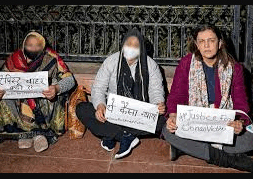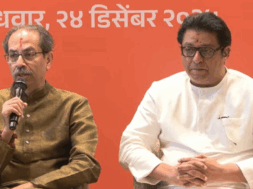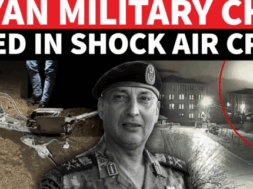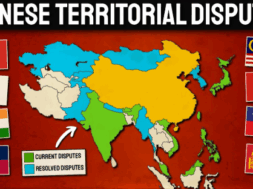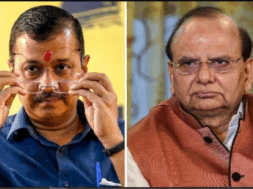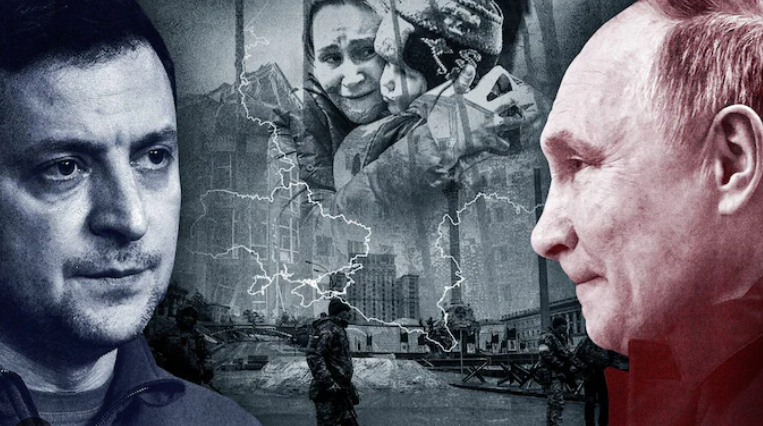
The ‘forgotten war:’ Ukraine still hopes for US aid, worried over what next?
Virendra Pandit
New Delhi: After Russia invaded it on February 24, 2022, Ukraine became the center of geopolitics with support, sympathy, weapons, and funds pouring in. With Hamas invading Israel on October 7, 2023, however, Palestine returned as the world’s foremost geopolitical hotspot.
Both these wars continue unabated, with no end in sight. They have claimed thousands of lives and destroyed assets worth billions of dollars. All attempts to cease the hostilities have failed.
In these ongoing wars, the US-led West, particularly Europe, became the biggest indirect players but the Gaza War shifted their focus from Ukraine to the Palestinian imbroglio, leaving Kyiv crying for succor.
While countries like Iran and Qatar are still filling the coffers of Hamas, Ukraine has largely been left to fend for itself. It is ending the outgoing year 2023 on a pessimistic note, being upset over the stalemate with Russia, and anxiety about financial aid.
In the 22 months of unequal war, Russia has annexed about one-fifth of Ukraine’s territory and nearly 1,000 km of frontline has barely budged this year, the media reported on Thursday.
For Ukraine, the year 2023 started with high hopes with its troops planning a counteroffensive against Russia, but is ending with disappointment on the battlefield, an increasingly somber mood among troops, and anxiety about the future of Western aid for Ukraine’s war effort.
Russian President Vladimir Putin is playing a waiting game as the ongoing war has proved a very expensive miscalculation by the Kremlin. He hopes the West’s support will gradually crumble, fractured by political divisions, eroded by war fatigue, and distracted by other demands, such as China’s menacing of Taiwan and the new war in the Middle East.
While Putin is set to contest the next Presidential poll in March 2024 for another six-year term, his US counterpart, Joe Biden, has also thrown his hat in the ring for the November 2024 poll for re-election. Their domestic political compulsions would weigh heavily in determining their foreign policies, and the fate of the two wars.
Nearly half of the Americans now believe the US is spending too much on Ukraine, according to a November poll. Moreover, the Gaza War has shifted Washington’s focus back to the Middle East. This shifting sentiment could benefit Putin as he seeks at least to keep Ukraine in limbo and eventually compel it to accept a bad deal to end the war.
In May, Putin got the victory he desperately wanted in the fight for the bombed-out city of Bakhmut, the longest and bloodiest battle of this war. It was a trophy to show Russians after his army’s winter offensive failed to take other Ukrainian cities and towns along the front line.
A mutiny in June by the Wagner mercenary group he had himself raised was the biggest challenge to Putin’s authority in his more than two decades in power first as the Prime Minister and then as the President. But it backfired. He defused the revolt and kept the allegiance of his armed forces, reasserting his hold on the Kremlin.
Putin faced setbacks overseas as well. He fell afoul of the International Criminal Court (ICC), which in March, issued an arrest warrant for him and his associates on war crimes, accusing him of personal responsibility for the abductions of children from Ukraine. That made it impossible for him to travel to many countries.
Ukraine has so far clawed back about half the land that the Kremlin’s forces occupied in their full-scale invasion in February 2022, according to the US, but it’s going to be hard to win back more. The big Ukrainian push fell far short of its ambitions, even though Western countries had given Kyiv a variety of weapons and training.
For its part, Ukraine struck far behind enemy lines, even hitting Moscow with long-range drones. It has bloodied Russia’s nose by hitting with missiles and drones a key bridge in Moscow-annexed Crimea, oil depots and airfields, and the headquarters of Russia’s Black Sea fleet in Sevastopol.
But it cannot continue the bloody and expensive war without Western aid. In contrast, Russia has endured huge losses of troops and equipment, and the country possesses the scale to soak up those setbacks.
Putin has secured large supplies of ammunition from North Korea and put together a state budget allocating a record amount to defense as it increases spending by around 25 percent in 2024-2026. He also ordered the country’s military to increase the number of troops by nearly 170,000 to more than 1.3 million.
Ukraine’s President Volodymyr Zelenskyy has tirelessly lobbied Western leaders to keep help coming, aware they are his country’s lifeline. He has traveled to Washington thrice in the past two years. Even US President Joe Biden traveled to Kyiv in February 2023 to display Western solidarity. He now wants the US Congress to grant an additional USD 50 billion for the war in Ukraine.
But support for Kyiv shows signs of fraying. Biden’s proposal is stuck in a divided US Senate.
Zelenskyy scored a diplomatic victory recently when the European Union granted Ukraine accelerated talks on joining the bloc. But even that triumph was tempered by the knowledge that the process could take years, as could clinching the NATO membership.
The EU’s denial of 50 billion Euros (USD 55 billion) in aid to help keep the battered Ukrainian economy going was frustrating for Kyiv.
Italian Premier Giorgia Meloni perhaps expressed the predicament most succinctly in November when she inadvertently told a pair of Russian prank callers that there is a lot of fatigue on the issue of Ukraine.
She said we are near the moment everybody understands that we need a way out.


